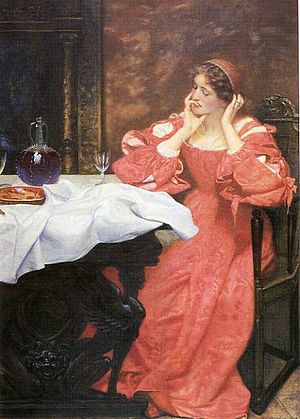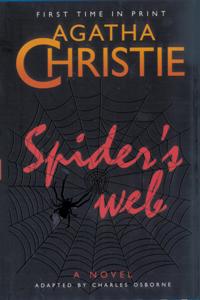Hey!
Welcome, and you can check out my posts. But, I don't write here anymore. So, if you are interested, come on over to https://sandhyavaradh.com/
Wednesday, October 16, 2013
Tuesday, September 17, 2013
My Post For YOCee - My experience on stage and backstage
 |
| Katherina contemplates her empty plate in The Taming of the Shrew (Photo credit: Wikipedia) |
http://yocee.in/2013/08/my-experience-on-stage-and-backstage/
Happy Reading!!! Do share you comments.
Thursday, September 12, 2013
Critical Thinking #11 and #12
 |
| source: http://bit.ly/ySESJK |
In the
eleventh class of the critical thinking course, we saw the movie “Witness For
The Prosecution”. It is actually a play written by Agatha Christie. This movie
was showed to us so that we understand about evidence. It was good.
The
twelfth class was the last day of the course. We took pictures together. We
tried solving a few problems. Here are those problems for you to attempt...
The first
one is well-known and quite easy.
Q1. Sruti, Keerthanya and
Sandhya eat at a eatery. The waiter says the bill is Rs 30 and each
of them give Rs 10. When he takes the money to the cashier, the cashier
returns Rs 5 as the bill is only 25. The waiter wonders how to distribute
5 between three and being intelligent, decides to keep 2 and return one to
each. So each of them paid 9 a total of 27 and the kept 2 so total is 29
whereas they originally paid 30. What happened to the missing rupee?
Q2. At the Secret
Convention of Logicians, the Master Logician placed a band on each attendee's
head, such that everyone else could see it but the person themselves could not.
There were many, many different colors of band. The Logicians all sat in a
circle, and the Master instructed them that a bell was to be rung in the forest
at regular intervals: at the moment when a Logician knew the color on his own
forehead, he was to leave at the next bell. Anyone who left at the wrong bell
was clearly not a true Logician but an evil infiltrator and would be thrown out
of the Convention post haste; but the Master reassures the group by stating
that the puzzle would not be impossible for anybody present. How did they do
it?
Q3. The King called
the three wisest men in the country to his court to decide who would become his
new advisor. He placed a hat on each of their heads, such that each wise man
could see all of the other hats, but none of them could see their own. Each hat
was either white or blue. The king gave his word to the wise men that at least
one of them was wearing a blue hat - in other words, there could be one, two,
or three blue hats, but not zero. The king also announced that the contest
would be fair to all three men. The wise men were also forbidden to speak to
each other. The king declared that whichever man stood up first and announced
the color of his own hat would become his new advisor. The wise men sat for a
very long time before one stood up and correctly announced the answer. What did
he say, and how did he work it out?
Do share your anwers.
Wednesday, September 11, 2013
Critical thinking #10
In the
10th class of the course, we moved on to the final part of the
course – evaluating arguments, looking at its strength and weaknesses, its
success and failure.
The
first step is to see in which area the argument lies in the table given below:
|
|
Valid
|
Invalid
|
|
Sound
|
A
|
B
|
|
Unsound
|
C
|
D
|
If the
argument lies in the region ‘A’ then it is a strong argument as it is both valid and sound.
It is a waste to argue if the reasons are in region 'D' as it is both invalid and unsound.
We learnt
that circumstantial evidence is rarely conclusive by itself.
The
most reliable evidence from witnesses is a first hand account. Hearsay evidence
is not as reliable.
The
witness’s credentials(qualification or reputation) are important, but do not
guarantee that their evidence is reliable.
Thursday, September 5, 2013
Critical Thinking #9
On the 9th day of
the course, we saw the movie “Twelve Angry Men”. I loved the movie. It's about a jury which tries to decide whether a man had committed murder. The first time they vote to check their unanimity, eleven members are convinced that the person in the trial IS guilty and only one is convinced that he MIGHT NOT be guilty. It becomes a eleven-to-one majority. Slowly, the one man convinces all the others with his effective, reasonable, valid and sound counter-arguments. The movie is all about arguments and counter-arguments.
It is a beautiful movie. It is a must watch category.
Sunday, September 1, 2013
My First 300 Book Reviews: Links for 76-100
 |
| bookshelf edit (Photo credit: youreyes) |
76. The Happy Prince
79. Many Waters
80. Hatchet
81. The Girl In Blue
84. In Too Deep
89. Big Money
90. Strom
Warning
91. A
King’s Ransom
96. The Hunger Games
98. The Guide
99. Neverwhere
100. Mocking Jay
Sunday, August 18, 2013
Spider’s Web
Author: Agatha Christie
Main Characters: Clarissa Hailsham–Brown, Henry Hailsham–Brown, Hugo Birch, Sir Rowland Delahaye, Jermy Warrender, Pippa, Eglin,
Miss Peake (Mrs. Brown), Oliver Costello, Miranda, Inspector Lord, Constable
Jones, Sir John, Mr. Jones (Kalendorff).
Description of one of the main characters: Sir Rowland Delahaye is a distinguished looking man in his
early fifties with a charming and cultivated manner. He is highly intelligent.
He helps the policemen find out what the truth is.
Whom I like and why: I like Clarissa Hailsham–Brown. She is very imaginative.
She does not sulk saying that it’s boring. She makes her environment cheerful
and enjoyable. She is very good at creating stories and situations.
Whom I dislike and why: I dislike Jermy Warrender. He is the one who murdred Oliver
Costello and Mr. Sellon. He also tries to kill Pippa and Clarissa but the police
catch him before he could.
Setting/theme of the story: Clarissa lives in Copplestone Court with her husband, Henry
Hailsham-Brown and her step daughter, Pippa. After living in London she is
actually bored to be in the countryside. But she always thinks of situations like “what if I find a dead body in the library?” and also tries to think out
that she would do in those situations. One day while she is cleaning up the
hall, as a main visitor was joining her husband shortly, she finds a dead body
behind the sofa. Not knowing what to do and with the help of Uncle Roly (Sir
Rowland Delahaye), Hugo Birch and Jermy, she transfers it to a secret passage.
They find the dead body to be Oliver Costello’s. Suddenly the police arrive
saying that they had got information about a dead body in Copplestone Court. They discover the dead body in the secret
passage and start investigating. Clarissia lies to the police, though she did
not commit the murder. At last, they all find out that Jermy was the culprit.
Clarissa finds out this when Jermy tries to kill Pippa as Pippa had seen Jermy
kill Oliver by hitting Oliver with his golf culb. They also find out that
Miss Peeke is actually Mrs. Brown. All ends well.
Part I Enjoyed The Most: I enjoyed the part when Clarissa and the three men hide the corpse of Oliver Costello in the secret passage.
Friday, August 16, 2013
Critical Thinking #8
In the 8th class of
the critical thinking course we learnt about evidence. We learnt that stronger
the evidence, more confident the conclusion. There are two types of evidence.
PRIMARY EVIDENCE – what people see (eye witness), hear (ear witness), etc. They give first hand information.
SECONDARY EVIDENCE – hearsay.
We also saw what circumstancial evidence is. Circumstantial evidence consists of facts, or circumstances.
We got to know the important
part played by corroboration.
Corroboration means agreement.
It helps in evaluating evidence.
We also took a look at the
credibility, plausibility and reasonable doubt of an evidence.
Thursday, August 15, 2013
Critical Thinking #7
 |
| English: inductive and deductive reasoning (Photo credit: Wikipedia) |
We discussed about the types of
logic in the seventh class of the course. Our teacher said that there are two types of logic– inductive logic and deductive logic.
Deductive logic is always
valid. It can either be sound or unsound.
Example for a valid but unsound
deductive argument :
R1 : All birds can fly.R2 : Penguin is a bird.C : Peguins can fly.
Example for valid and sound
deductive logic:
Nothing that is cheap is good.Therefore, nothing that is good is cheap.
Maths is full of deductive
logic. In deductive logic one can be always sure that there is 100% validity.
Inductive logic is stating
examples and then generalizing it.
Example for inductive logic:
R1: Satellite picture show a cold front moving eastwards across the Canadian coastline
R2: It moves with a trough of low pressure along its leading edge.
R3: It will meet up with a large mass of rotaing wind moving across the Atlantic to scooping down from the easterly-winds sweeping down from the artic.
C: Consequently violent stroms can be expected to develop in the north Atlantic in next 24 hours.Here, we are stating examples and then concluding. We do not know if its 100% valid in inductive logic, though it may be sound.
We learnt the difference
between the two.
Subscribe to:
Comments (Atom)













